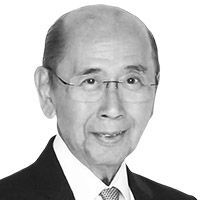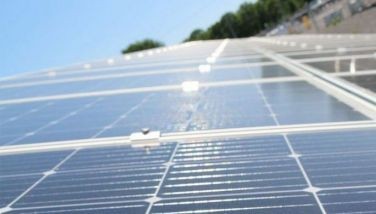How times have changed

In November 1993, some 23 years ago, I accompanied former president Fidel V. Ramos on his first visit as Philippine president to the United States. Over a two-week period, he visited New York City, Washington, D.C. (for a working visit), Boston, Houston, Atlanta, San Francisco.
It is instructive to note that the state of Philippine-US relations and of peace and stability in East Asia from the Philippine perspective at that time were both very different than the current situation. Much of the change can be attributed to the impact of economic progress and the pressures of globalization, but it is also striking how the personal views of the individual leaders of the Asia-Pacific region have influenced these changes.
In 1993, the region’s leaders included Bill Clinton, Jiang Zemin, Kim Il-Sung, and Kiichi Miyazawa, who was succeeded in the same year by Morihiro Hosokawa. Under the leadership of these personalities, the threat to peace and stability in East Asia were well-contained, which is a far cry from the current state of affairs.
China had embarked on economic reforms that would soon see their economy become the second largest in the world. They did so under the umbrella of “peaceful rise” which put priority on economic growth underpinned by cordial relations with the rest of the world. In the South China Sea, although China asserted its sovereignty and awarded exploration rights in the Paracels, it occupied no significant land in the Spratly area. North Korea was only just about to begin its nuclear development program which triggered saber rattling from the US from time to time. Miyazawa was an avowed pacifist and was firmly against any changes to the Japanese Constitution. The United States under then president Bill Clinton was also more preoccupied with events in Europe and the Middle East than East Asia.
Yet, then president Fidel Ramos was prescient enough to express alarm at the seeming inattention being given by the US to the Asia-Pacific region and the rise of China. In his speeches at the World Affairs Council, The Asia Foundation, and the Commonwealth Club in San Francisco he said, “Today the countries rimming this great ocean (Pacific) make up the world’s fastest growing region…. America is an integral part of this region – as the coming Asia-Pacific Economic Cooperation (APEC) in Seattle dramatizes. The next hundred years have been tagged the Asia-Pacific Century, which Saburo Okita said would be “the driving force for dynamism in the world economy.”
“This promise of the Pacific depends on America’s keeping to its role – as the heart of an open trading region spanning three continents, as the fulcrum of the regional balance of power and as the guarantor of regional stability against the ambitions of any adventurist power. “
FVR also raised the issue of isolationism as no longer an option for the US. “But isolationism for America is no longer a practical option. Geography, history and the linkages of the international economy all compel your country to maintain global interests.” He then quoted Madeleine Albright, the then permanent representative to the UN: “Whether measured in arms proliferation, refugees on our shores, the destabilization of allies or loss of exports or investments, the cost of runaway conflicts sooner or later comes home to America.”
At the end of his speech, he admonished: “if I have any single message for this great country – and everyone involved in your organizations, which take a keen interest in Asia – it would be this: America always be true to your spirit – for being true to your values and ideals, you also serve your own highest self-interest and of those who in the world wish you well.”
He also spoke on regional peace and security at the Center for International and Strategic Studies in Washington D.C. “….…”the end of the cold war has not ended all threats to peace and stability. Superpower rivalry has vanished, but regional and local power rivalries are emerging. Ethnic and religious conflicts previously suppressed by the requirements of the East-West confrontation are erupting or dangerously building up pressures. And the threat of nuclear destruction still hangs over the world as nuclear disarmament falters and nuclear proliferation persists.”
Nevertheless there are dangers. “………As the political scientist Samuel Huntington has warned, and others could be the result of new geopolitical rivalry and struggle within Asia-Pacific….principally because of China’s rise to power and pre-eminence and the uncertainties posed by North Korea’s nuclear capability.”
“…… there is much concern about the situation in the South China Sea and the evident military buildup of China.” ……. We must have America’s continuous engagement in Asia. We need America to help us build the new framework necessary to ensure that no power dominates the region”
It was almost as if FVR was speaking of events and threats today than of 23 years ago although this time it would have fallen on deaf ears. “Plus ça change, plus c’est la même chose” - the more things change, the more they remain the same? Not exactly – while the underlying fundamentals remain the same they have been progressing all the time. To me, what we are seeing is a geopolitical canvas evolving over time, but remarkably influenced by leaders who share a common characteristic – autocratic-style leadership. In truth, these leaders are a manifestation of their people’s desire for strong, decisive leadership – in some instances, against the political elite as in the Philippines and the US – under the promise of bringing about national revival. The result has been a stunning reversal of previously held certainties in geopolitical tendencies of these countries.
(to be continued)
- Latest
- Trending































